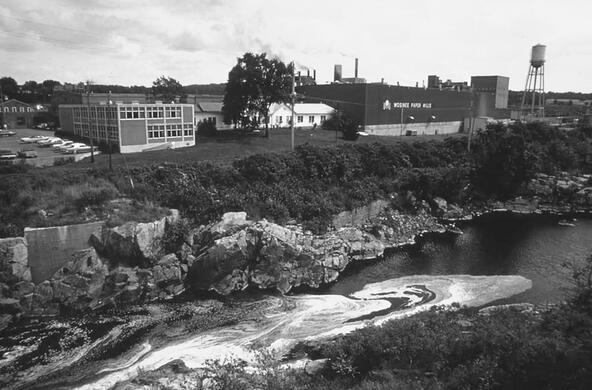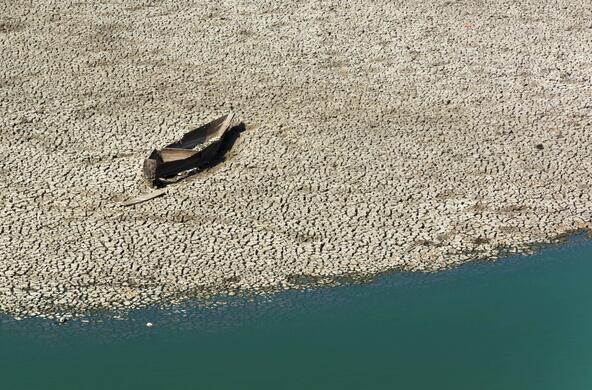In a converted greenhouse off of Route 82, scientists at the Cary Institute of Ecosystem Studies are planning to contaminate streams.Fortunately, those streams are in 20 fiberglass tubs at the institute's new Artificial Stream Facility.
The environmental nonprofit based in Millbrook recently completed testing of equipment that will allow scientists to recreate stream conditions in a controlled laboratory setting. The scientists will then inject various contaminants to see what effect they have on those ecosystems.
First up: diphenhydramine, the antihistamine found in Benadryl.
"Drugs of all kinds are detected in rivers, lakes and streams," said Emma Rosi-Marshall, an aquatic ecologist at Cary. "But understanding what the consequences are for organisms that live in those streams is very difficult in the environment. By building an artificial stream facility, I can take organisms that live in streams and grow them in my stream facility, expose them to known concentrations of pharmaceuticals and look at the ecological consequences."
Eight hundred miles of streams flow across Dutchess County's landscape, according to the county's 2010 Natural Resources Inventory. The streams serve as a recreational resource for anglers, and many are annually stocked with fish by the state Department of Environmental Conservation.
Approximately 67 percent of the county's 807 square miles drain to the Hudson River, according to the resources inventory. The water snakes through the Wappinger Creek, Fishkill Creek and several smaller streams including the Casperkill, Fallkill, Crum Elbow, Landsman Kill, Saw Kill and Stony Creek.
Little is understood about how chemicals affect these ecosystems.
"There are so many different organisms in the environment," said Herb Buxton, coordinator of the U.S. Geological Survey's Toxic Substances Hydrology Program in Reston, Va. "And there are so many different biological ways that those chemicals can affect the organisms. Because there are such a tremendous number of different things that have to be tested, we need to find improved ways to narrow down the priorities."
The Cary facility was completed in May and scientists have spent the summer testing it. The $50,000 facility was supported by a grant from the Wallace Genetic Foundation. Based in Washington, D.C., the nonprofit foundation was established in 1959 by Henry A. Wallace, who founded of the nation's first commercial hybrid seed company and later served as vice president under Franklin D. Roosevelt.Before chemicals can be injected into the artificial streams, scientists must first recreate conditions found in the natural environment.
Rosi-Marshall and Holly Wellard-Kelly, a research support specialist, took rocks plucked from the Wappinger Creek, scrubbed algae off of them and then injected the algae into the fiberglass streams. The algae will be cultivated until the conditions in the tubs reflect those in the environment.
"We've planted the seeds of our garden," Rosi-Marshall said.
Water is recirculated and flow is controlled by custom stainless steel paddle wheels fashioned by Simmons Fabricating Service in Pleasant Valley. Although natural streams don't have recirculated water, a flow-through system would have been too expensive to maintain, Rosi-Marshall said. To compensate, the scientists change water frequently and add water when evaporation reduces water levels.
Before coming to Cary in 2009, Rosi-Marshall served as a professor at Loyola University Chicago, which also has an artificial stream facility. In a paper published in April, Rosi-Marshall and scientists from Loyola and Indiana University reported that antihistamines dry out more than noses and watery eyes.
Diphenhydramine reduced the presence of biofilms, the slippery substance found on rocks in streams. Biofilms are collections of algae, fungi and bacteria that interact in complex ways.
"Biofilms are the bottom of the food web," Buxton said. "When the chemicals get into that, then aquatic insects and fish start to eat it. As it goes up the food chain to larger organisms, then they may accumulate at even higher levels. And if there is an impact at higher levels, then you are going to see it adversely affecting larger organisms and it may get to organisms that we eat, too."
Rosi-Marshall said her first experiments will seek to build on the previous studies of the effects of antihistamines. The facility, she said, can also be used to examine the impact of other contaminants, such as metals or waste fluids from hydraulic fracturing.
"Anything that we want to do," she said, "we could use these streams to investigate it."
Recreating stream conditions at Cary. (Please note: embedded video includes ads)





